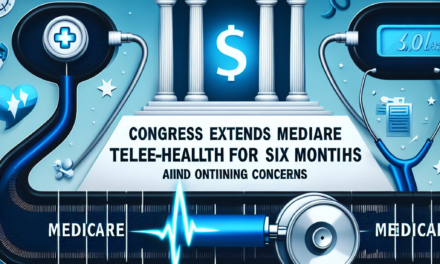Enhancing Patient Engagement: Proven Strategies for Healthcare Success

In the rapidly evolving landscape of healthcare, patient engagement has emerged as a critical component for achieving successful outcomes. Engaged patients are more likely to adhere to treatment plans, experience better health outcomes, and report higher satisfaction with their care. This article explores proven strategies for enhancing patient engagement, providing valuable insights and practical examples to help healthcare providers foster meaningful connections with their patients.
Understanding Patient Engagement
Patient engagement refers to the active participation of patients in their own healthcare journey. It involves patients taking an active role in decision-making, self-management, and communication with healthcare providers. Understanding the nuances of patient engagement is essential for implementing effective strategies.
The Importance of Patient Engagement
Patient engagement is crucial for several reasons. Engaged patients are more likely to:
- Adhere to prescribed treatments and medication regimens.
- Experience improved health outcomes and quality of life.
- Report higher levels of satisfaction with their healthcare experiences.
- Participate in preventive care and wellness activities.
- Reduce healthcare costs by avoiding unnecessary hospitalizations and procedures.
Research has shown that engaged patients are more likely to take proactive steps in managing their health, leading to better overall outcomes. For instance, a study published in the Journal of the American Medical Association found that patients who were actively involved in their care had a 20% lower risk of hospitalization compared to those who were less engaged.
Barriers to Patient Engagement
Despite its importance, several barriers can hinder patient engagement. These include:
- Lack of access to healthcare information and resources.
- Complex medical jargon that is difficult for patients to understand.
- Limited time during medical appointments for meaningful discussions.
- Cultural and language differences that impede effective communication.
- Socioeconomic factors that limit access to healthcare services.
Addressing these barriers requires a multifaceted approach that considers the diverse needs and preferences of patients. Healthcare providers must be proactive in identifying and overcoming these obstacles to foster a more engaging environment.
Case Study: The Impact of Patient Engagement on Diabetes Management
A compelling example of the impact of patient engagement can be seen in diabetes management. A study conducted by the American Diabetes Association found that patients who actively participated in self-management education programs experienced significant improvements in their blood glucose levels and overall health outcomes. These programs empowered patients with the knowledge and skills needed to manage their condition effectively, leading to reduced complications and hospitalizations.
This case study highlights the importance of providing patients with the tools and resources they need to take control of their health. By fostering a collaborative relationship between patients and healthcare providers, significant improvements in health outcomes can be achieved.
Strategies for Enhancing Patient Engagement
Implementing effective strategies for enhancing patient engagement requires a comprehensive approach that addresses the unique needs and preferences of patients. The following strategies have been proven to foster meaningful engagement and improve healthcare outcomes.
1. Leveraging Technology for Patient Engagement
Technology plays a pivotal role in enhancing patient engagement by providing patients with convenient access to healthcare information and resources. Several technological solutions have been developed to facilitate patient engagement, including:
- Patient portals that allow patients to access their medical records, schedule appointments, and communicate with healthcare providers.
- Mobile health applications that provide personalized health information and reminders for medication adherence.
- Telemedicine platforms that enable virtual consultations and follow-up appointments.
- Wearable devices that track vital signs and provide real-time health data.
These technological solutions empower patients to take an active role in managing their health, leading to improved outcomes and increased satisfaction. For example, a study published in the Journal of Medical Internet Research found that patients who used a mobile health application for diabetes management experienced a 1.2% reduction in their HbA1c levels compared to those who did not use the app.
2. Enhancing Communication and Education
Effective communication and education are essential components of patient engagement. Healthcare providers must prioritize clear and open communication with patients to ensure they understand their diagnosis, treatment options, and self-management strategies. Key strategies for enhancing communication and education include:
- Using plain language and avoiding medical jargon when discussing health information with patients.
- Providing educational materials in multiple formats, such as brochures, videos, and online resources.
- Encouraging patients to ask questions and express their concerns during medical appointments.
- Offering group education sessions and workshops to promote peer support and learning.
By prioritizing effective communication and education, healthcare providers can empower patients with the knowledge and confidence needed to actively participate in their care. A study published in the Patient Education and Counseling journal found that patients who received clear and concise information from their healthcare providers were more likely to adhere to their treatment plans and report higher satisfaction with their care.
3. Building Strong Patient-Provider Relationships
Building strong relationships between patients and healthcare providers is a cornerstone of patient engagement. Trust and rapport are essential for fostering open communication and collaboration. Strategies for building strong patient-provider relationships include:
- Taking the time to listen to patients’ concerns and preferences.
- Demonstrating empathy and understanding in all interactions.
- Involving patients in decision-making processes and respecting their autonomy.
- Providing consistent and coordinated care across different healthcare settings.
Strong patient-provider relationships have been shown to improve patient satisfaction, adherence to treatment plans, and overall health outcomes. A study published in the Annals of Family Medicine found that patients who reported high levels of trust in their healthcare providers were more likely to adhere to their medication regimens and experience better health outcomes.
4. Encouraging Patient Feedback and Involvement
Encouraging patient feedback and involvement in healthcare decision-making is a powerful strategy for enhancing patient engagement. Patients who feel heard and valued are more likely to actively participate in their care. Strategies for encouraging patient feedback and involvement include:
- Implementing patient satisfaction surveys to gather feedback on healthcare experiences.
- Establishing patient advisory councils to provide input on healthcare policies and practices.
- Incorporating patient preferences and values into treatment plans.
- Providing opportunities for patients to participate in clinical trials and research studies.
By actively involving patients in their care, healthcare providers can create a more patient-centered environment that fosters engagement and collaboration. A study published in the Journal of Healthcare Management found that healthcare organizations that prioritized patient feedback and involvement experienced higher levels of patient satisfaction and improved clinical outcomes.
5. Addressing Social Determinants of Health
Addressing social determinants of health is a critical component of enhancing patient engagement. Social determinants, such as socioeconomic status, education, and access to healthcare services, can significantly impact a patient’s ability to engage in their care. Strategies for addressing social determinants of health include:
- Providing transportation services to ensure patients can access healthcare appointments.
- Offering financial assistance programs to reduce the burden of healthcare costs.
- Collaborating with community organizations to address food insecurity and housing instability.
- Implementing culturally competent care practices to address language and cultural barriers.
By addressing social determinants of health, healthcare providers can create a more equitable and inclusive environment that supports patient engagement. A study published in the American Journal of Public Health found that addressing social determinants of health led to improved health outcomes and reduced healthcare disparities among underserved populations.
Conclusion
Enhancing patient engagement is a multifaceted endeavor that requires a comprehensive approach. By leveraging technology, enhancing communication and education, building strong patient-provider relationships, encouraging patient feedback and involvement, and addressing social determinants of health, healthcare providers can create a more engaging and patient-centered environment. These strategies have been proven to improve health outcomes, increase patient satisfaction, and reduce healthcare costs. As the healthcare landscape continues to evolve, prioritizing patient engagement will be essential for achieving success and delivering high-quality care.





